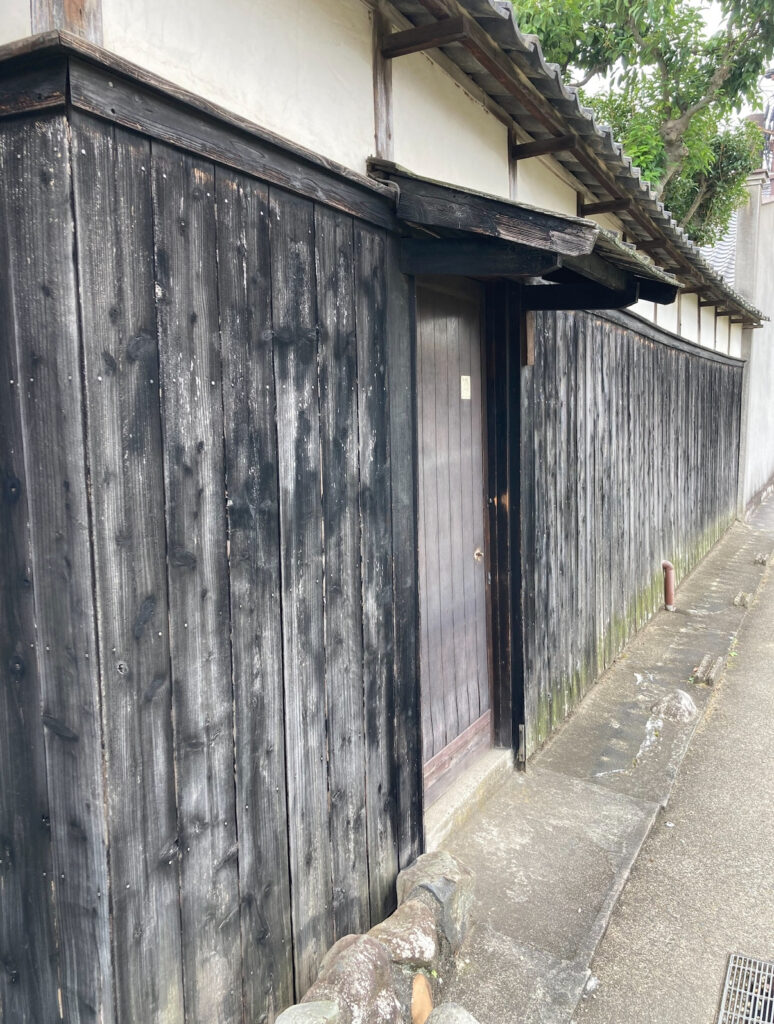Yakisugi, also known as Shou Sugi Ban, is a centuries-old Japanese technique of charring wood to enhance its durability and aesthetic appeal. Used in traditional Japanese architecture for generations, this unique process has now become a sought-after material for modern architects, designers, home builders, and contractors looking to combine exceptional durability with a refined, high-end aesthetic.
More than just a surface treatment, Yakisugi transforms the very nature of the wood, offering aesthetic flexibility, longevity, and sustainability. Whether used in luxury residences, hospitality projects, or high-end commercial spaces, it provides a distinct, sophisticated look while requiring minimal maintenance.
A key distinction must be made between wood durability, which can extend for a century or more, and color retention, which evolves naturally over time. Some embrace the wabi-sabi patina, while others prefer to maintain the fresh, deep-charred appearance—both options are possible with Yakisugi.
Wood Durability: A Centuries-Old Protection
For designers and builders seeking a long-lasting, low-maintenance solution, Yakisugi is in a league of its own. Unlike conventional wood treatments that require regular reapplication of chemicals, Yakisugi is naturally resilient.
The carbonized layer created through charring serves as a natural shield, enhancing the wood’s resistance to:
• Moisture – The burned outer surface repels water, reducing swelling and contraction, which is crucial in extreme climates.
• Pests – Termites and fungi struggle to penetrate the carbonized layer, making it ideal for long-term durability.
• Decay – Unlike untreated wood, Yakisugi does not require chemical treatments to resist rot, a key advantage for sustainable and eco-conscious projects.
• Fire – The charring process reduces the wood’s combustibility, providing a natural fire-resistant barrier—a major benefit for homes and buildings in wildfire-prone areas.
When properly applied and installed, Yakisugi can last well over 100 years, as evidenced by historical Japanese structures. The structural integrity of the wood remains intact, requiring minimal intervention beyond basic care. This makes it an ideal choice for exterior siding, decking, and interior applications where longevity is a priority.
For architects and developers looking for a distinctive, long-term investment, Yakisugi provides an unparalleled blend of beauty, resilience, and sustainability.
Color Retention: A Wood That Evolves With Time
While the wood’s durability is long-term, its color evolution is a natural process influenced by various factors. This makes Yakisugi an adaptable solution for both classic and contemporary designs.
1. Sun Exposure & UV Radiation
• In direct sunlight, the deep-black finish may slowly transition into silvery, elegant tones, creating a natural, aged patina.
• This weathered look blends beautifully with modern minimalist aesthetics and organic architecture.
• For those who wish to preserve the original deep-charred look, Yakisugi allows for simple, periodic maintenance—without sacrificing wood integrity.
2. Weather & Environmental Conditions
• Rain, wind, and humidity contribute to surface evolution, but unlike untreated wood, Yakisugi does not degrade.
• Coastal and mountain environments may speed up the transformation, adding to the natural beauty of the material.
3. Aesthetic Preferences: Fresh Look vs. Wabi-Sabi Aging
• Some clients love the pristine blackened finish and choose periodic treatments every 3, 5, or 10 years, depending on exposure.
• Others embrace the timeless beauty of aged Yakisugi, letting it develop its own patina with no intervention.
This versatility allows architects, designers, and homeowners to tailor Yakisugi to their vision—whether they want a bold, dramatic statement or a soft, organic evolution.
Maintenance: Optional & Customizable
One of the greatest selling points of Yakisugi is its flexible maintenance approach. Unlike other premium exterior finishes that demand frequent upkeep, Yakisugi offers a customizable experience:
• For a fresh, deep-black look:
• Periodic application of natural oils or UV-protective sealants.
• Refinishing sections if needed—a quick and cost-effective process compared to repainting or replacing materials.
• For a natural aging effect:
• Letting the wood develop its own patina, with minimal intervention.
• For balanced aging:
• Partial maintenance on high-exposure areas while letting shaded areas age naturally—ideal for projects that blend contemporary and rustic elements.
This makes Yakisugi a dream material for builders and designers—it offers both long-term stability and design flexibility.

Why Choose Yakisugi? The Perfect Balance Between Luxury & Performance
Yakisugi is not just about aesthetic appeal—it is an investment in quality, sustainability, and longevity.
✔ Unique Aesthetic – A rare balance between modern sophistication and traditional craftsmanship.
✔ Extreme Durability – Outlasts many contemporary wood treatments without chemical reliance.
✔ Fire & Pest Resistance – Natural protection without additional coatings.
✔ Low Maintenance – Optional upkeep, making it a worry-free material.
✔ Sustainability – No chemical treatments, eco-friendly sourcing, and reduced long-term impact.
For architects, builders, and designers seeking a premium wood with both character and resilience, Yakisugi is the ultimate choice.
A Wood That Evolves With Time
Yakisugi is more than a building material—it is a statement of sophistication, durability, and natural elegance. Whether chosen for its century-long lifespan, its adaptability to different climates, or its ability to evolve aesthetically over time, it offers a level of versatility unmatched by other wood treatments.
With Yakisugi, you’re not just selecting a finish—you’re embracing a living material that grows with your space, maintaining both its integrity and timeless beauty for generations to come.